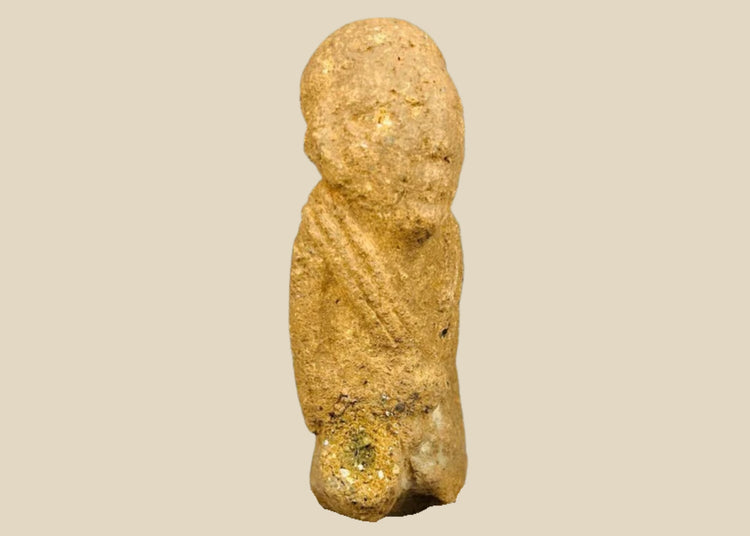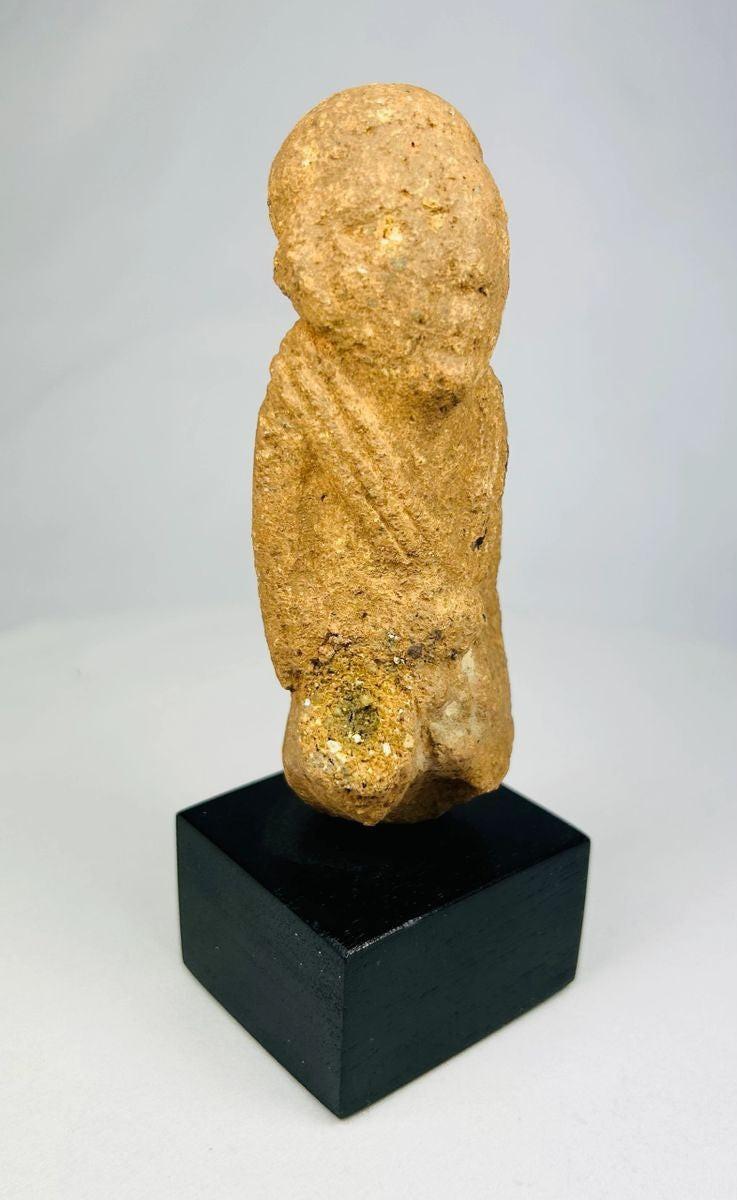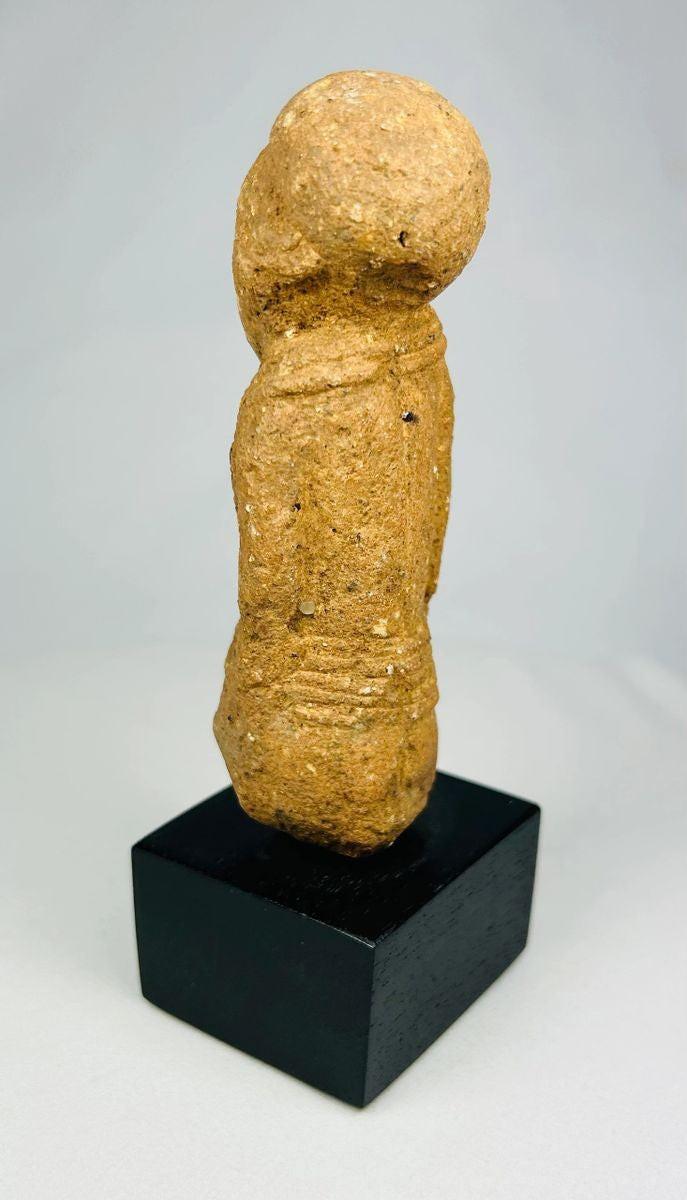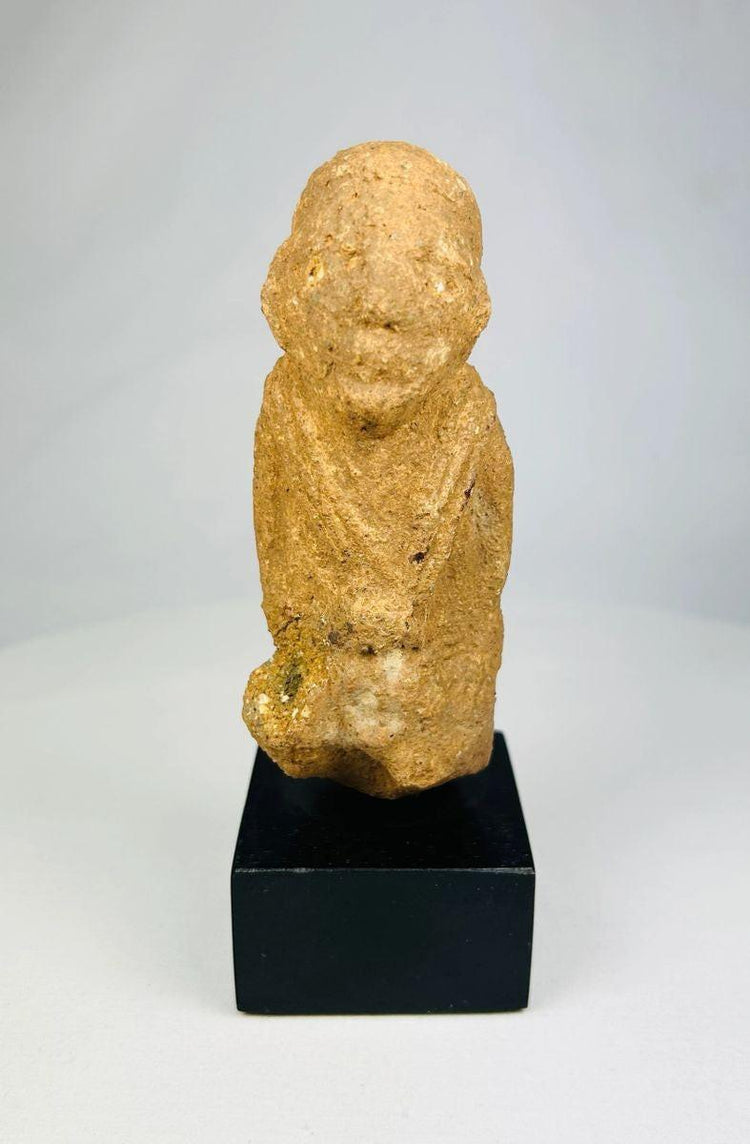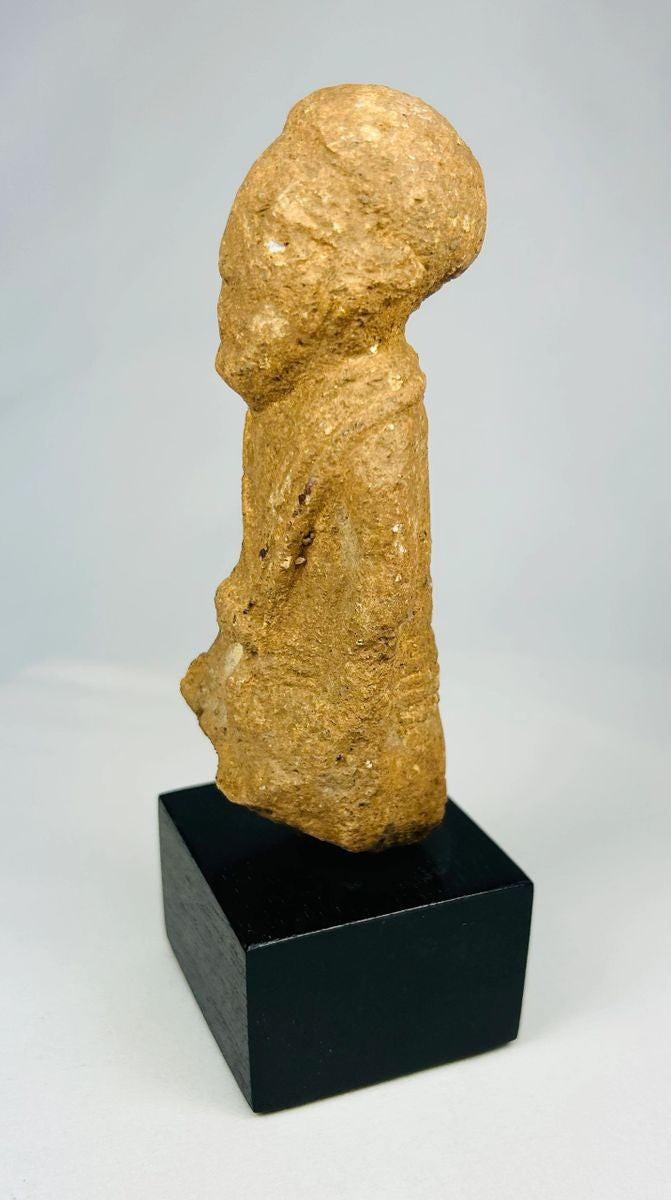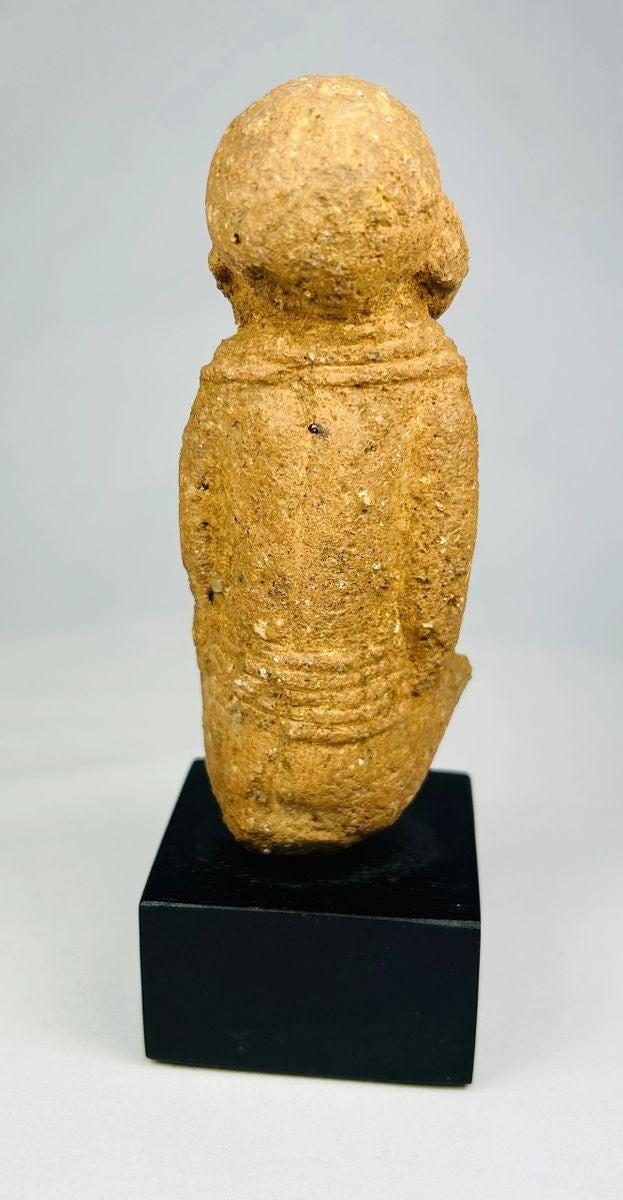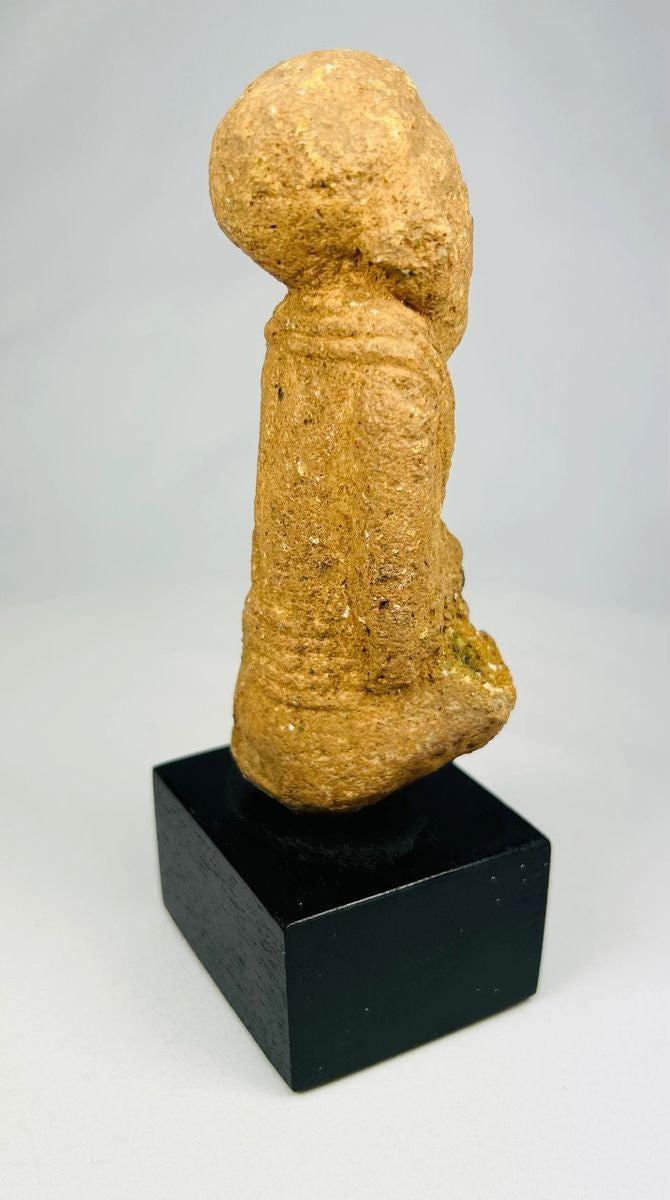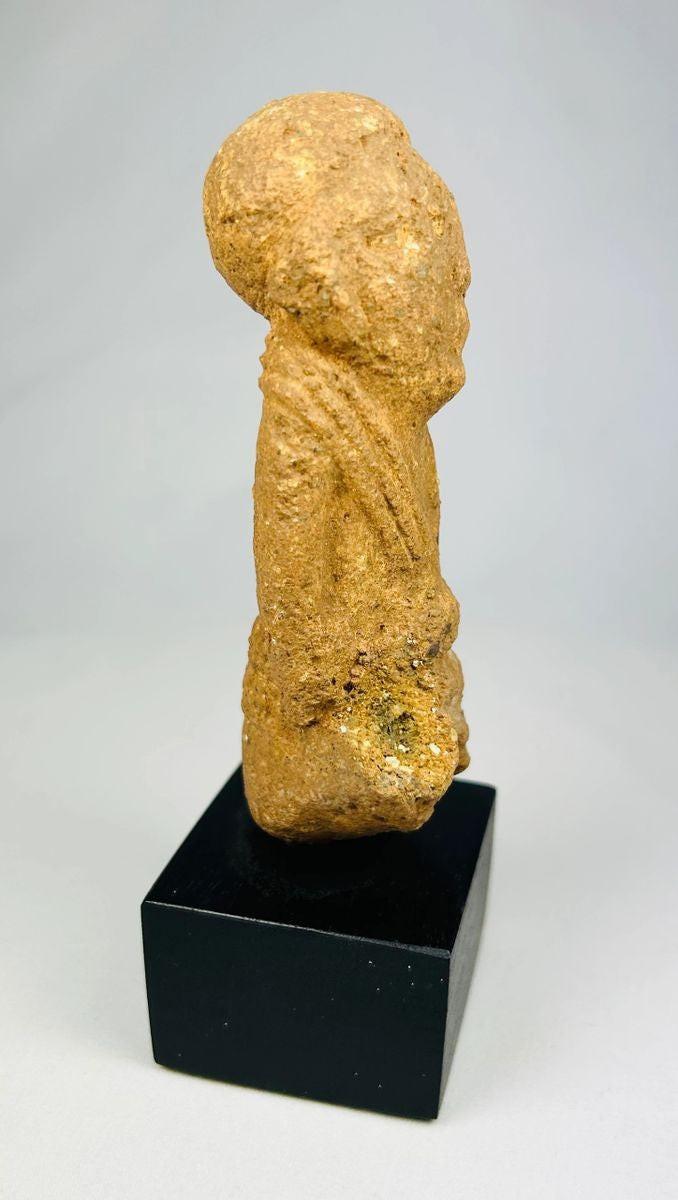Ancient Sokoto | West African | Terracotta Figurine | Circa 500-200 CE
Description
More
Less
Historical Context & Origin
Region: West Africa, Sokoto Civilization
Material: Reddish terracotta clay, locally sourced
Period: 500–200 BCE
Description
This Sokoto terracotta figurine represents the flourishing artistic and spiritual traditions of early West Africa. The figure is crafted from reddish terracotta, featuring a rounded head, simplified facial features, and a robe-like garment. Its sculptural posture and form are characteristic of Sokoto artistry, emphasizing symbolic rather than naturalistic expression. Terracotta figures of this kind were often created as votive offerings, spiritual guardians, or representations of revered individuals, reflecting their role within ceremonial and religious life.
Features
- Hand-modeled terracotta with locally sourced clay
- Rounded head and simplified, stylized features
- Robe-like garment with sculptural detailing
- Distinctive posture consistent with Sokoto tradition
- Mounted for stability and display
Cultural Significance
The Sokoto civilization was known for its advanced societal structures and refined artistic output. Figurines such as this one held deep spiritual meaning, serving as intermediaries in ceremonial practices or as protective guardians. Their symbolic forms reveal the intersection of religion, community, and artistry in early West African culture. Today, they stand as valuable links to one of Africa’s earliest civilizations, providing insight into both ritual practice and aesthetic development.
Condition
Surface shows natural weathering, patina, and fine granules embedded within the clay, attesting to its authenticity and centuries of burial. Stable condition with no modern restoration.
Dimensions (approximate)
Height: 6 in
Age
Over 2,000 years old
Learn More
Dive deeper into the archaeology and artistry of West African terracotta traditions:
Scholarly Articles on Ancient African Terracotta Sculpture – WordPress Archive
Browse comparable figures and sculptural forms in our curated collection:
Ancient Statues, Figures & Carvings Collection – Relic & Rarity
Explore a museum-held example of Sokoto culture terracotta:
Terracotta Male Figure Fragment, Sokoto Culture (500 BC–200 AD) – ICOM Museum Object Record
Description
Historical Context & Origin
Region: West Africa, Sokoto Civilization
Material: Reddish terracotta clay, locally sourced
Period: 500–200 BCE
Description
This Sokoto terracotta figurine represents the flourishing artistic and spiritual traditions of early West Africa. The figure is crafted from reddish terracotta, featuring a rounded head, simplified facial features, and a robe-like garment. Its sculptural posture and form are characteristic of Sokoto artistry, emphasizing symbolic rather than naturalistic expression. Terracotta figures of this kind were often created as votive offerings, spiritual guardians, or representations of revered individuals, reflecting their role within ceremonial and religious life.
Features
- Hand-modeled terracotta with locally sourced clay
- Rounded head and simplified, stylized features
- Robe-like garment with sculptural detailing
- Distinctive posture consistent with Sokoto tradition
- Mounted for stability and display
Cultural Significance
The Sokoto civilization was known for its advanced societal structures and refined artistic output. Figurines such as this one held deep spiritual meaning, serving as intermediaries in ceremonial practices or as protective guardians. Their symbolic forms reveal the intersection of religion, community, and artistry in early West African culture. Today, they stand as valuable links to one of Africa’s earliest civilizations, providing insight into both ritual practice and aesthetic development.
Condition
Surface shows natural weathering, patina, and fine granules embedded within the clay, attesting to its authenticity and centuries of burial. Stable condition with no modern restoration.
Dimensions (approximate)
Height: 6 in
Age
Over 2,000 years old
Learn More
Dive deeper into the archaeology and artistry of West African terracotta traditions:
Scholarly Articles on Ancient African Terracotta Sculpture – WordPress Archive
Browse comparable figures and sculptural forms in our curated collection:
Ancient Statues, Figures & Carvings Collection – Relic & Rarity
Explore a museum-held example of Sokoto culture terracotta:
Terracotta Male Figure Fragment, Sokoto Culture (500 BC–200 AD) – ICOM Museum Object Record
You May Also Like






















